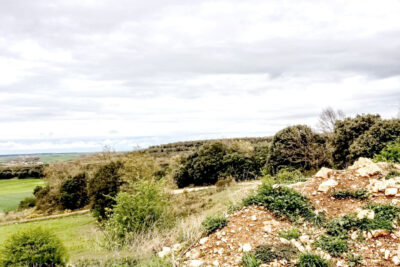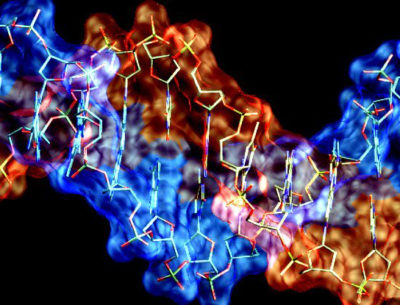by Richard William Nelson | Dec 30, 2013
 The genomic revolution is an increasingly challenging, long-standing orthodoxy in human evolution. An international team of geneticists headed by Matthias Meyer (pictured right below) of the Max Planck Institute for Evolutionary Anthropology in Germany reported in the journal Nature earlier this month.
The genomic revolution is an increasingly challenging, long-standing orthodoxy in human evolution. An international team of geneticists headed by Matthias Meyer (pictured right below) of the Max Planck Institute for Evolutionary Anthropology in Germany reported in the journal Nature earlier this month.
The team studied the mtDNA of 28 fossilized hominins estimated to be 400,000 years old from the Sima de Los Huesos cave in northern Spain‘s Sierra de Atapuerca Mountain range (pictured left).
Meyer’s team, which included legendary Swedish geneticist Svante Paabo, analyzed the genetics of these fossils collected during the 1970s. The study report, entitled “A mitochondrial genome sequence of a hominin from Sima de Los Huesos,” unexpectedly concluded that the fossils were genetically similar to the Denisovans, even though they morphologically resembled Neanderthals. Sima de los Huesos means “Pit of the Bones.”
Continue Reading
by Richard William Nelson | Dec 14, 2013
 Origin of Life scientists will assemble next month in Galveston, Texas, for the “Understanding the Origin and Evolution of Life on Earth and the Galaxy” conference hosted by Gordon Research Conferences (GRC), a non-profit organization started in 1931.
Origin of Life scientists will assemble next month in Galveston, Texas, for the “Understanding the Origin and Evolution of Life on Earth and the Galaxy” conference hosted by Gordon Research Conferences (GRC), a non-profit organization started in 1931.
GRC gives scientists a forum to discuss “frontier research in the biological, chemical, and physical sciences, and their related technologies.” Access to the conference, however, is restricted. Only those who have been sent an invitation can register − not even the press. The conference attendees must agree not to quote anyone. GRC is concealing the origin of life research. Australian news reporter, Suzan Mazur, concerned about the lack of transparency, published an interview with the conference organizer, Steve Benner, posted on the Huffington Post, noting:
“So I decided to have a chat with Steve Benner about the upcoming Texas Origins meeting.”
Continue Reading
 The genomic revolution is an increasingly challenging, long-standing orthodoxy in human evolution. An international team of geneticists headed by Matthias Meyer (pictured right below) of the Max Planck Institute for Evolutionary Anthropology in Germany reported in the journal Nature earlier this month.
The genomic revolution is an increasingly challenging, long-standing orthodoxy in human evolution. An international team of geneticists headed by Matthias Meyer (pictured right below) of the Max Planck Institute for Evolutionary Anthropology in Germany reported in the journal Nature earlier this month.
 Origin of Life scientists will assemble next month in Galveston, Texas, for the “Understanding the Origin and Evolution of Life on Earth and the Galaxy”
Origin of Life scientists will assemble next month in Galveston, Texas, for the “Understanding the Origin and Evolution of Life on Earth and the Galaxy” 